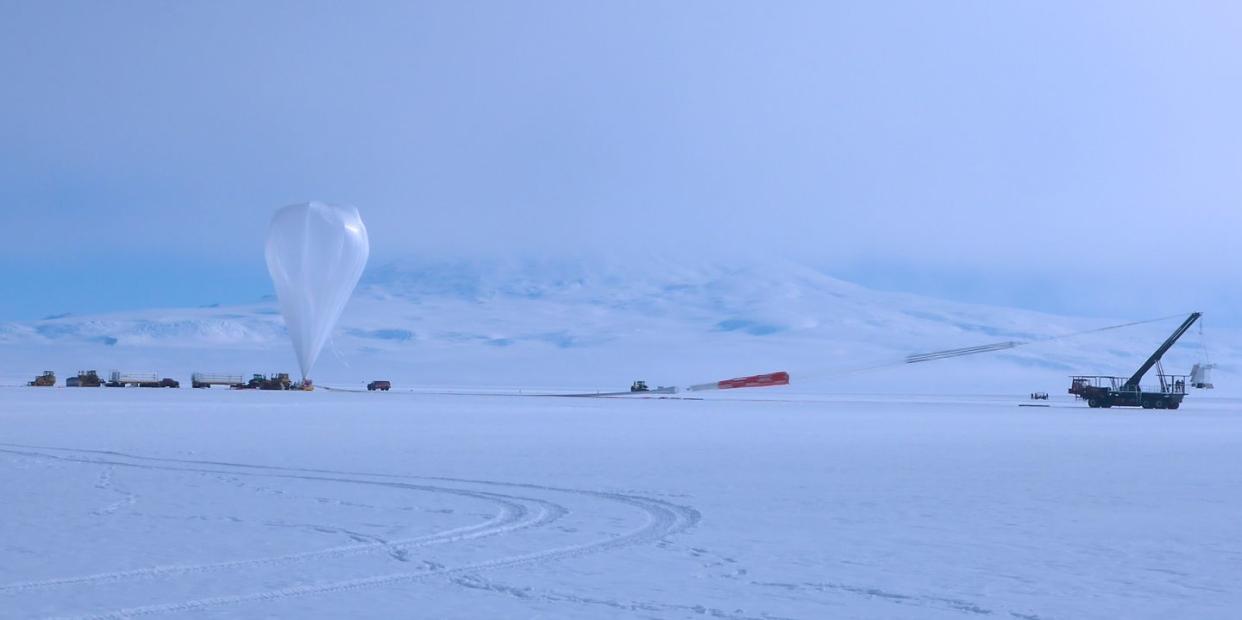Strange Particles Coming Out of the Earth Hint at New Physics

High above Antarctica, far from any human interference, stands an antenna designed to find high-energy exotic particles from space as they crash into the Earth’s atmosphere. Recently, the antenna has picked up a couple of particles coming from the other direction-out of the ground. It's a discovery that just might change physics forever.
NASA’s Antarctic Impulse Transient Antenna experiment was built to find exotic particles like neutrinos falling from the sky. Such particles rarely make it past the upper atmosphere, so scientists loft the sensitive electronic equipment into the sky via high-altitude balloon. But when scientists spotted high-energy particles coming from below, that meant those particles must have traveled through the entire earth.
That's weird. There are some exotic particles like neutrinos that aren’t fazed by ordinary matter. They pass through everything, including the entire planet. In fact, billions of neutrinos from the Sun are passing through your body right now and you don’t feel a thing. The catch is that only low-energy neutrino particles can move very far through other kinds of matter. High-energy particles, on the other hand, are too energetic to make it through the atmosphere (much less the entire) without colliding into something.
NASA's flying antenna detected two separate instances of high-energy particles passing through the Earth, which shouldn’t be possible. In fact, a new paper calculates that if those observed particles were neutrinos, they would each have less than a one-in-a-million chance of making it all the way through the Earth. And yet, scientists spotted two of them.
One possible explanation, perhaps the only one that makes sense, is a new type of particle scientists have never seen before. But a new particle means new physics, which is a pretty big deal. New physics don’t show up every day, so scientists are taking their time here. Currently, researchers are speculating about what these new particles could be, trying to fit what little data they have to predictions of theoretical exotic particles.
Those scientists will need more detections before they come up with a solid conclusion. For now, we’ll just have to wait for the NASA team in Antarctica to launch their balloon again so we can spot more strange particles coming out of the Earth.
Source: LiveScience
('You Might Also Like',)

